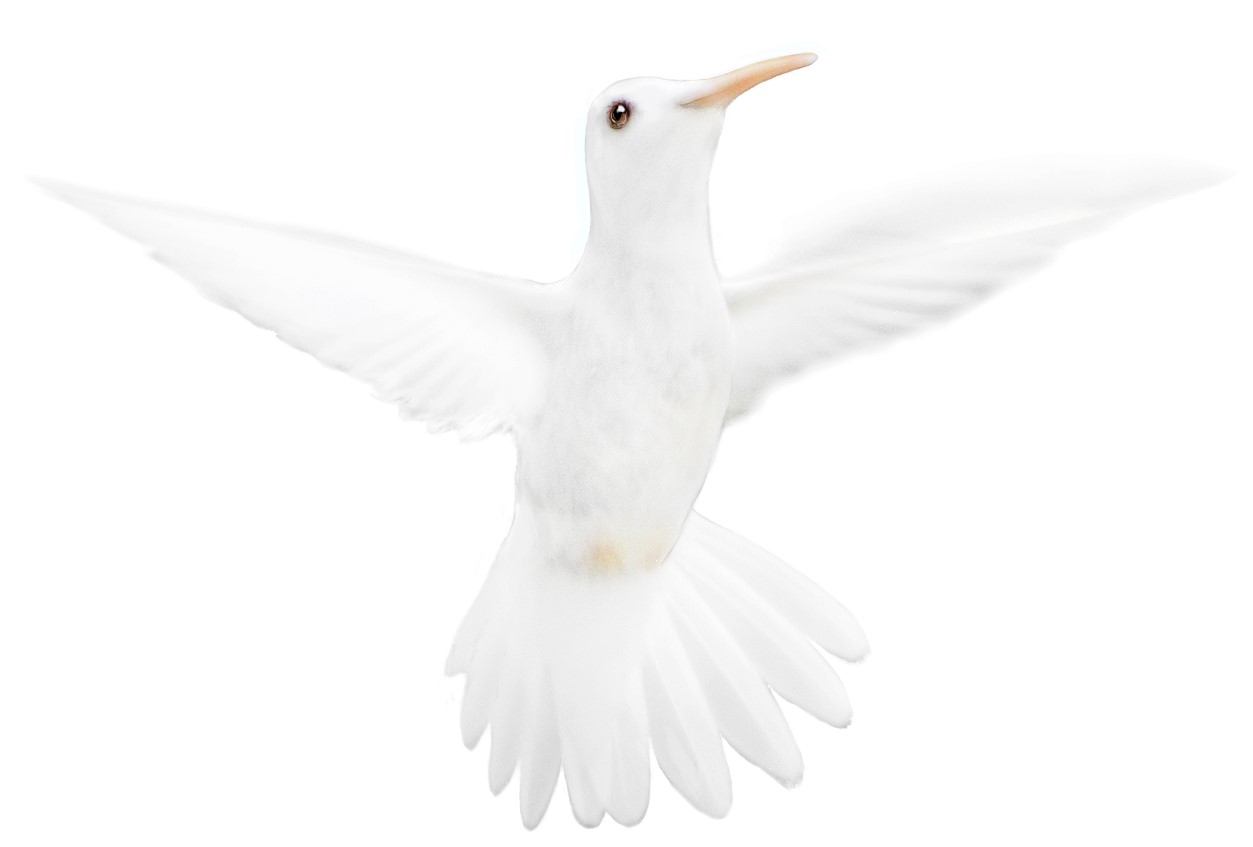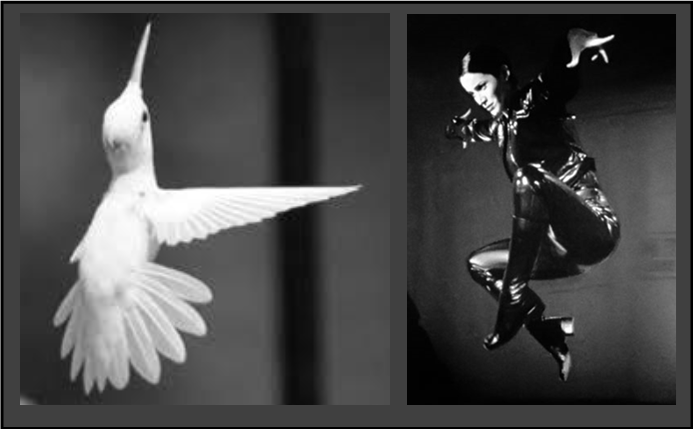Hummingbird says, “You may feel or be small, but watch and follow me! See my joyful mastery of flight! My tiny, fragile body flies for thousands of miles! I triumph over all birds, even the mighty eagle! I am a survivor! I live my life with the greatest enthusiasm and courage! I am a flying jewel!”
ABOUT THE INCREDIBLE, MAGICAL HUMMINGBIRD
Hummingbirds in the Pacific NW Rainforest weigh about as much as a penny to just under the weight of a nickel. One of their feathers is undetectable in the palm of the hand.
Academic sources vary in information on their metabolism, but most quality sources list their heart rate at 1,260 beats per minute, while the average flap of their wings is 53 times per second. The human eye sees only a blur. This tiny bird is so finely tuned and fragile that it can perish without feeding every 10-15 minutes. Their energy is incredible but exists on a razors edge throughout life.
Over the years, we fed the hummingbirds. A few are year-round residents in this moist, temperate rainforest. Most migrate here to raise their families and then move on.
Like salmon, hummingbirds typically return to the place of their birth to breed, as do other species of birds. With the passing years, as the babies grew up to have babies, the population here grew in an exponential way.
It has come to pass that at least (well over) 2000 birds stay in this area of the forest for about four months each spring. The numbers are calculated by the amount of nectar consumed in a season. Seventy pounds of sugar. Stockpots of nectar brewed every 3 days.
In the first week of March, a male “scout” arrives several days before others show up. Finding the feeders, he will stake out the area as his territory, perching on a twig or an immature rhododendron blossom nearby to guard his treasure.
Soon after his arrival, he will alert us to his presence, hovering close by until he is certain we are aware of him. They know who feeds them. Perhaps this is also saying “hello”, or both. They are quite intelligent.
The males are magnificent miniature gladiators. They aggressively combat other males to chase them away from their claimed feeders or flowers. Most of the contest mainly looks like a duel of flying finesse, although they also joist with their long, pointed beaks. That is if you can see it. All this takes place at high speed tangle in mid air, ending with one chasing the other away with great zeal.
Although hummingbirds are quite independent, solitary souls, they are capable of teaming up to harass a threatening animal or bird, chasing it away, or cooperating in other critical matters.
Interestingly, the territorial male will allow females to enjoy his claimed feeders or flowers. An edge in breeding no doubt. While the males engage in constant, spectacular, aeronautical dogfights around the feeders, the females will slip by to enjoy a leisurely sit-down meal.
When their chicks have grown enough to leave the nest, about 3 weeks before the migration continues on, they must become strong and ready. They forage, visit the feeders, master flight, and continue to mature. At this time, nectar is made every day and a half.
The best times to see how many birds are present are at first clear light and dusk. The air surrounding the feeders becomes blackened with hummers. The whir of wings creates a hummingbird breeze, and the sound fills the perfumery with energy as the hum grows loud.
The crowding birds sit side by side, taking turns on a single “flower” port of many, arranged around the base of six mega-feeders. Many more hover in bands, two and four feet out. Others circle like jets at a busy airport, waiting for a chance to land. Dozens more wait in nearby bushes. Still more wait in the trees beyond. The air in-between is full of incoming birds, looking for a roost in which to wait.
No fighting occurs, even among the males during these two times.
This intensity is greatest at close of day. To get through the night, their delicate bodies go into torpor to conserve energy. As one can imagine, they are extremely keen to get a last meal just before that. At this hour, they fully cooperate so that all may feed.
At dawn they begin to rouse from torpor. Once able to fly, about the time one can see the tips of the flower petals and the littler leaves on a bush, they arrive for their first important meal. A serious matter for those living life so close to the edge. They seek a long drink of nectar to fuel their bodies and come to full life. Again, they cooperate for the benefit of all.
Perhaps the most significant thing about hummingbirds is their critical role in the health of nature. They clean the air of small insects. Like the bees, they are pollinators. Flowers depend on them for their ability to reproduce. This is a creature whose well-being and survival we want to support.

The hummingbird’s energy affects the whole of life in ways that tell of things unseen. They are key to the ambiance here in the rainforest, adding their own kind of magic.
These amazing creatures are the embodiment of enthusiasm. The very tonal pitch of their wings is a song of verve and purpose. Their flying prowess is unmatched, teaching about excellence.
While they are not foolhardy, their abilities give them great confidence. They have no peers. All other birds defer to them.
Hummingbirds teach us that the least can become the greatest. In their fragility is a touching lesson in possibility. To not be fooled by appearances or comparisons. Even if you feel small, you can do wonderful things.
They are also the bringers of joy. Their enthusiasm and antics are contagious.
They have well earned the title of “flying jewels”. Their iridescent, brilliantly colored feathers, glint and gleam in the sun.
Feed the hummingbirds and you will be rich in beauty. Plant the flowers they love, to enjoy the gifts they bring to your life. (You will also help their survival. )
Their wings flap in a figure-8 pattern, the pattern of the infinity symbol. Their speed in flight makes them seem to appear out of nowhere. It is no wonder that the ancient peoples of the Americas attributed qualities of magic and spirit to the hummingbird. Many stories have them as intermediaries between worlds. Others say the tiny bird brought them out of a dark underworld to live in the sun. It is also said they can help one win in competitions of speed and endurance.
In their ability to fly straight up, they impart to the observer, the energy of upliftment. In their ability to fly straight down, often taking the lower position in escape from attack, there lies the age-old lesson, “sacrifice is the quickest way to the gates”.
Surely, those whose hearts are heavy with grief or depression can find in the hummingbird a moment of encouragement and a touch of happiness to moisten a parched heart. And for those who are oppressed, the unencumbered flight of the hummingbird lends the energy of freedom and courage to aid the heart and mind to follow one’s dreams.

The hummingbird’s large presence surrounding the perfumery, often heard through open windows, and their love of sweet flowers made them a natural choice for our logo. The nature and energy of hummingbirds match the perfume we create.
Specifically, we chose a white hummingbird, seen in our logo-art. Why? Because of the Native American lore about the time when white animals would begin to appear. Albino hummingbirds are now appearing throughout the country. You can read up on it. It is an interesting story for another day.
The logo shows a hummingbird in flight with a celestial body behind it. As a sun, it is a nod to the new day and new ways of our modern world, utterly transformed and barely recognizable from the old world we knew, less than a mere two hundred years ago. It is also a sign of constancy; the same sun of our ancestors. Finally, it also represents a new moon, a classic sign of the female energies that must rise if humanity is to become healthy and whole.
Year round, as we create and age the perfumes, they are exposed to the energies of the forest and its hummingbirds. Perhaps, if you listen carefully to your fragrance, you will hear the whir of a thousand wings.
For information on the survival of hummingbirds as our climate changes:
https://www.inverse.com/science/climate-change-spells-bad-news-for-hummingbirds
https://journals.biologists.com/jeb/article/225/10/jeb243294/275376/Anna-s-hummingbird-Calypte-anna-physiological
https://phys.org/news/2017-12-climate-hummingbirds.html
What Scientists say you can do to help hummingbirds survive and the flowers they pollinate
Beautify your surroundings with flowers that hummingbirds love and add a water source such as a fountain. Putting out a feeder helps. Plants and trees cool your home and neighborhood. Plus, they combat climate change. Find out if you are on their migration route. If so, you will help them all the more.
https://www.audubon.org/news/one-simple-way-help-hummingbirds-threatened-climate-change
https://www.fs.usda.gov/wildflowers/pollinators/animals/hummingbird-guides.shtml

Recent Comments